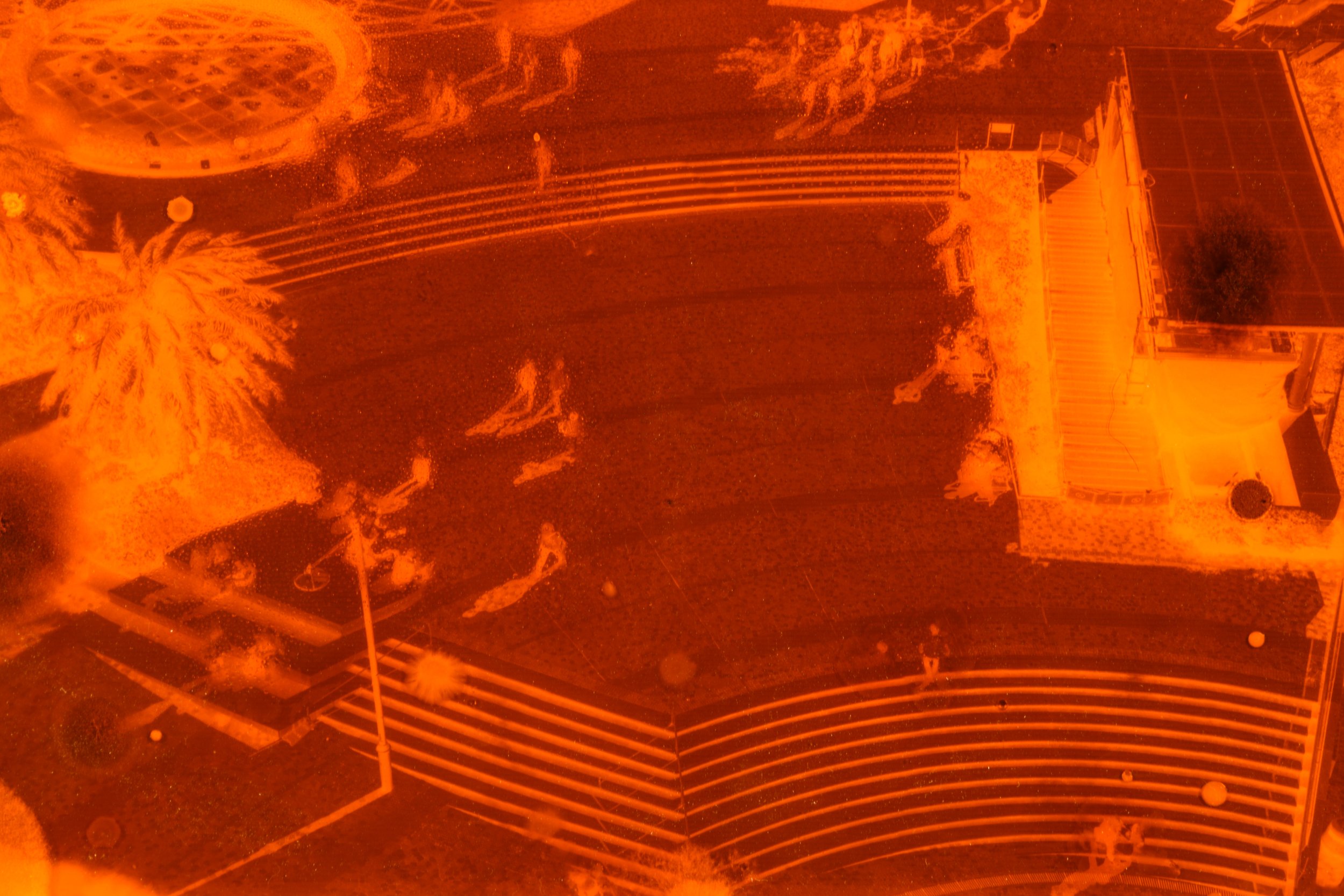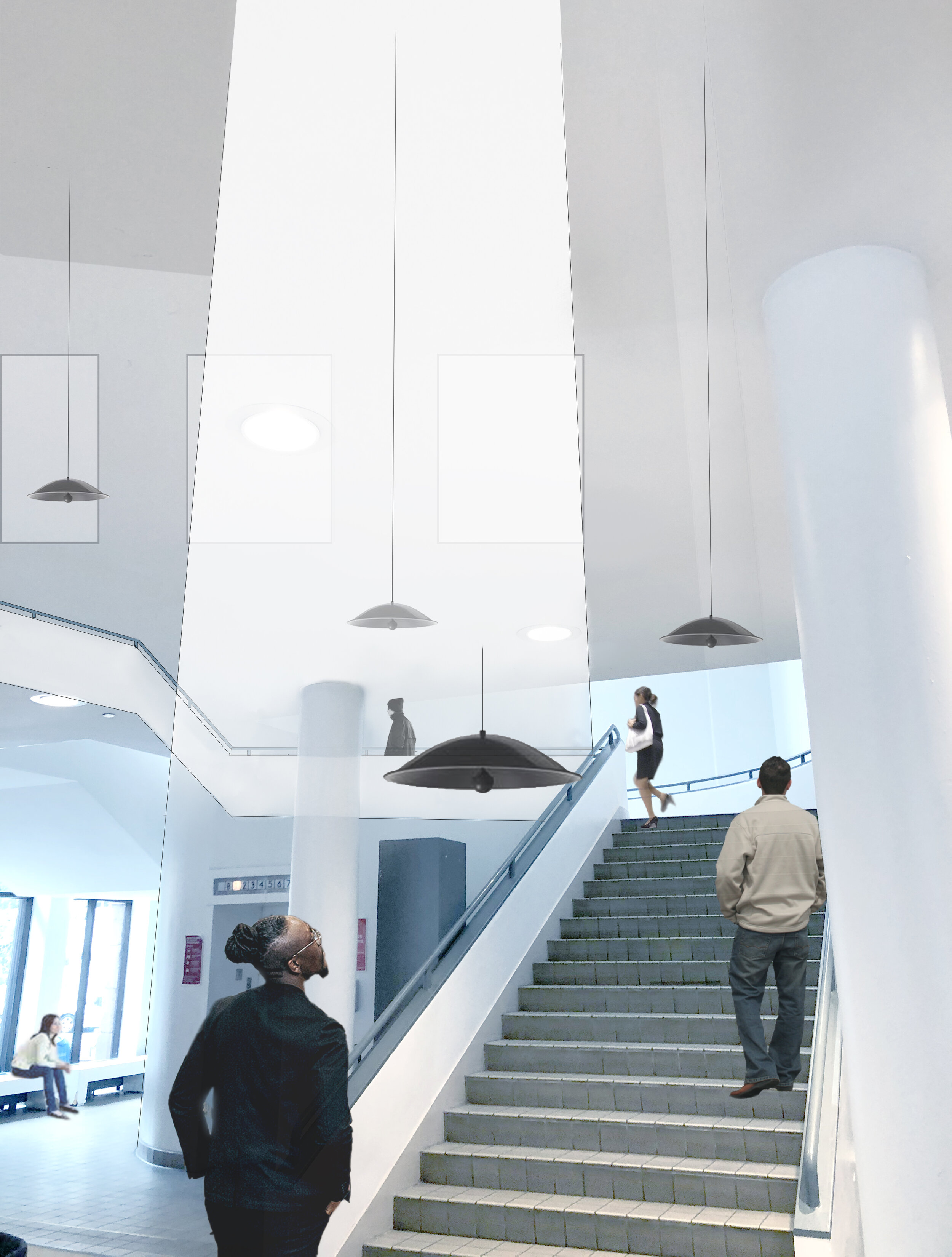On Language
2017 3-Channel Video Installation
Duration: Looped Videos
Materials: Digital Projectors, Freestanding Screen, Pedestal, Slide Projector with Slides
This project explores the nature of communication through proximity and presence inspired by research into bacterial interactions.
My starting point of interest was how the enteric nervous system (gut microbiome) interacts with us at a physio-emotional level. I wanted to learn more about bacterial interactions, so I contacted a bio lab at Cooper Union’s engineering department and convinced them to let me observe/video record bacteria through a microscope. They were very supportive and allowed me to utilize their equipment in my research.
One problem I immediately encountered while looking at E.Coli, a common bacteria in the human microbiome, is that it is almost transparent and tough to “catch” visually under a microscope. The lab assistant suggested staining the bacteria using colored dyes to make viewing more manageable, a common practice at the labs that I was unfamiliar with at the time. I said sure, and the technician came back with a slide of dyed E.Coli. It was much easier to see the bacteria this time. However, something was amiss. They were not moving. She assured me that It’s a common situation where the bacteria get overdyed, and they all die in the process, so she prepared a secondary slide for me.
My eagerness to simply view and understand a group of organisms had resulted in a mass genocide of these entities.
For some, this instance may be relatively insignificant; however, the experience set me off on a series of conceptual experiments and projects contemplating the nature of communication between one and another. After accidentally killing thousands (if not hundreds of thousands of bacteria), I started researching how bacteria communicate. Part of my interest was learning more about them through their mode of communication and partly, perhaps subconsciously, a desire to find a way to apologize for killing them previously.
Bacteria, specifically E.Coli, communicate chemically through electrical signals transmitted through the touching of their hair-like flagella that covers their skin. I find chemical communication fascinating for its instantaneous nature of expression and reception. It seems distant from our everyday mode of symbolic communications. Yet this mode of communication is not dissimilar from the way our neurotransmitters interact in our brains. This piece explores the space between expression and communication, the gap between one and another. How might we communicate through presence and proximity? What are the consequences of simple gestures and unconscious actions?
The video of hands presents people as beings trying to communicate their existence while being limited and veiled by a screen of perception. Thomas Nagel’s essay What Is It Like to Be a Bat was influential in my thinking around the topic of human-to-bacterial communication. I wanted to highlight the difficulty in understanding “others” both at a human scale and a wider ecological scale. By distilling communication to fundamental modalities of presence, proximity, and chemistry, I seek to understand empathy and connection that transcends tribal categories of separation.
I would like to thank Oliver Medvedik at The Kanbar Center For Biomedical Engineering for letting me use his lab for my research on this project.















